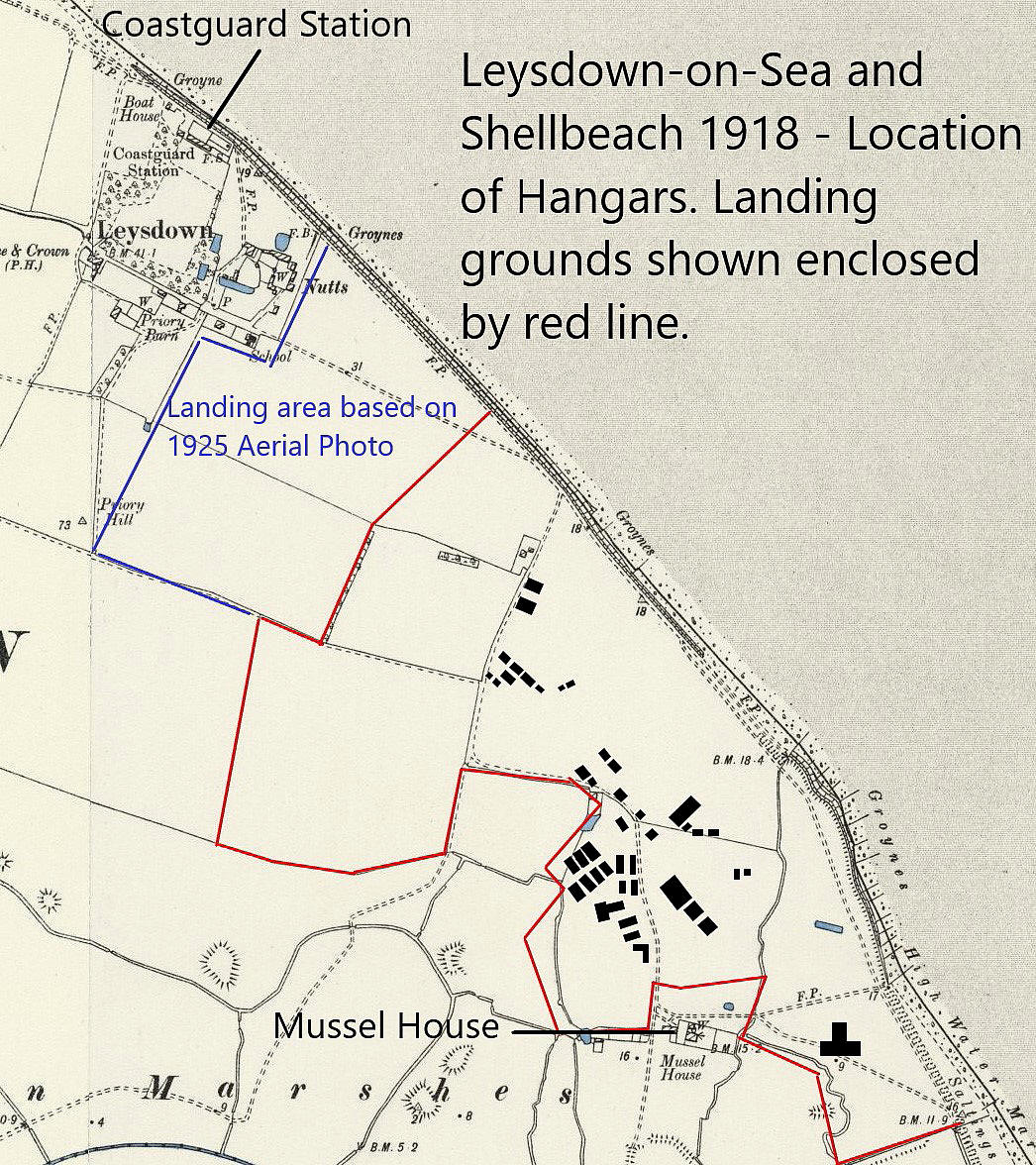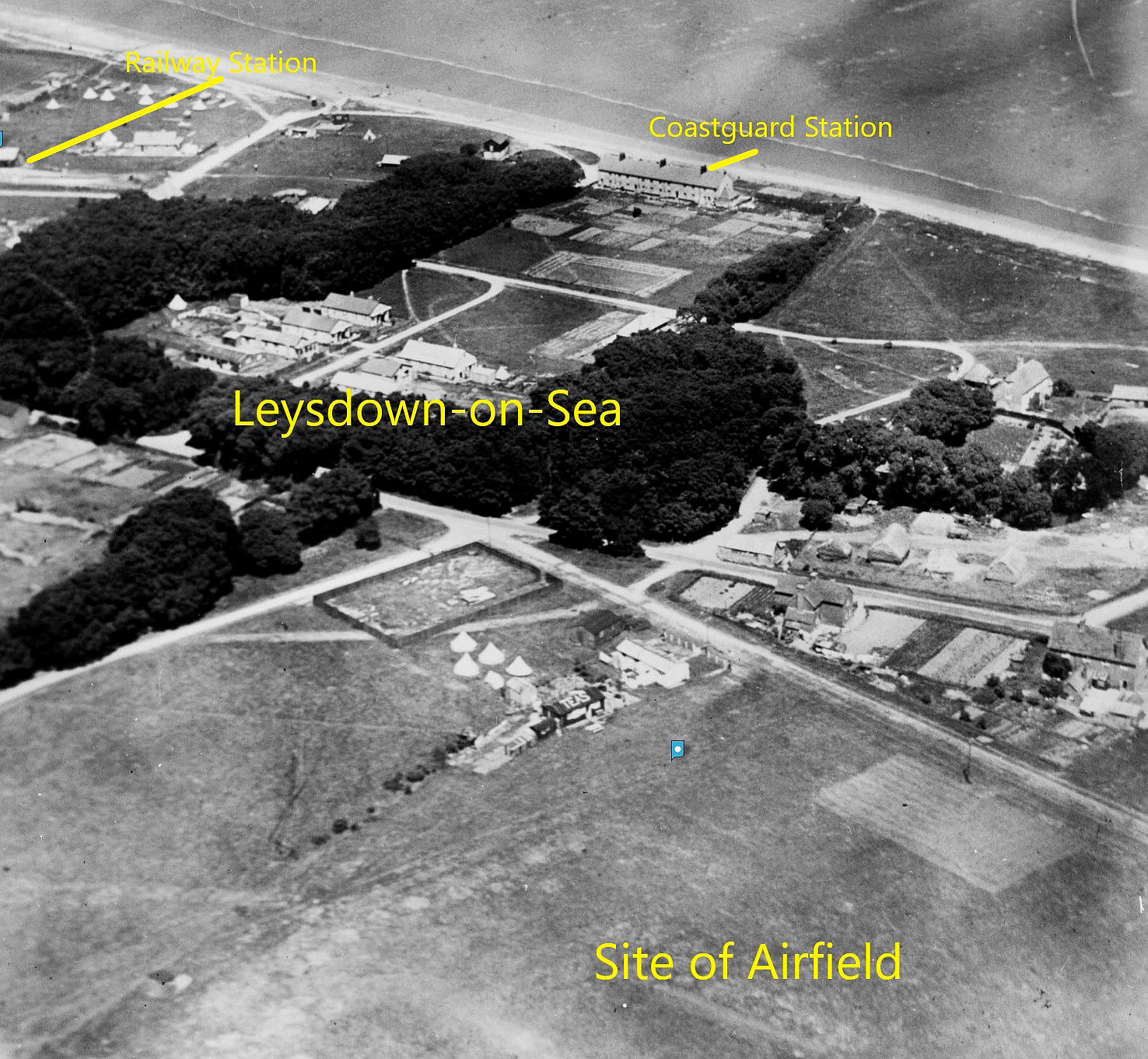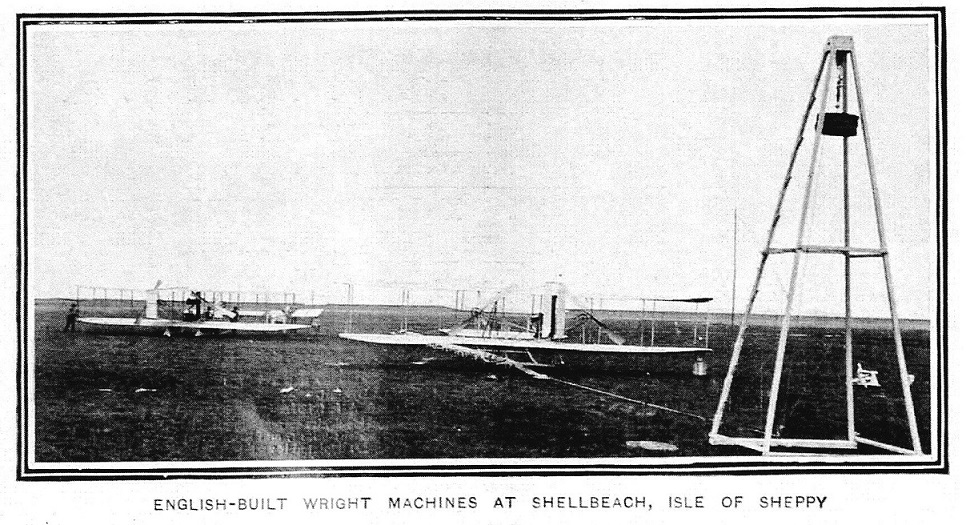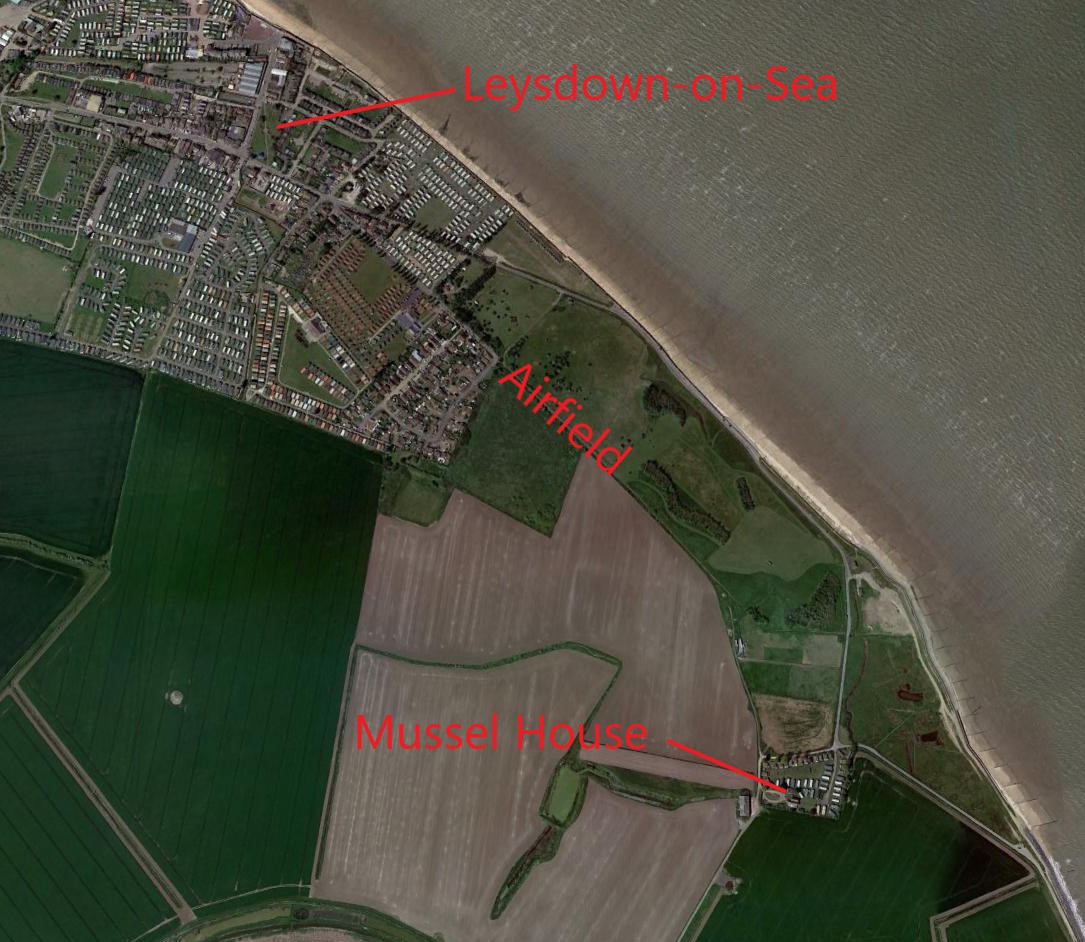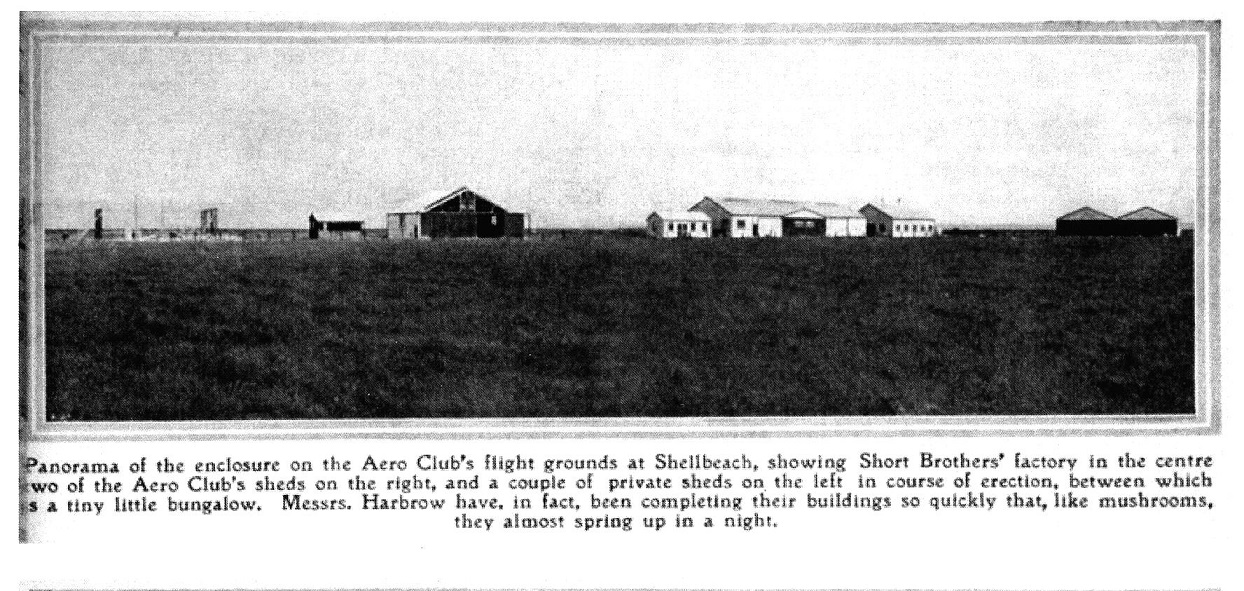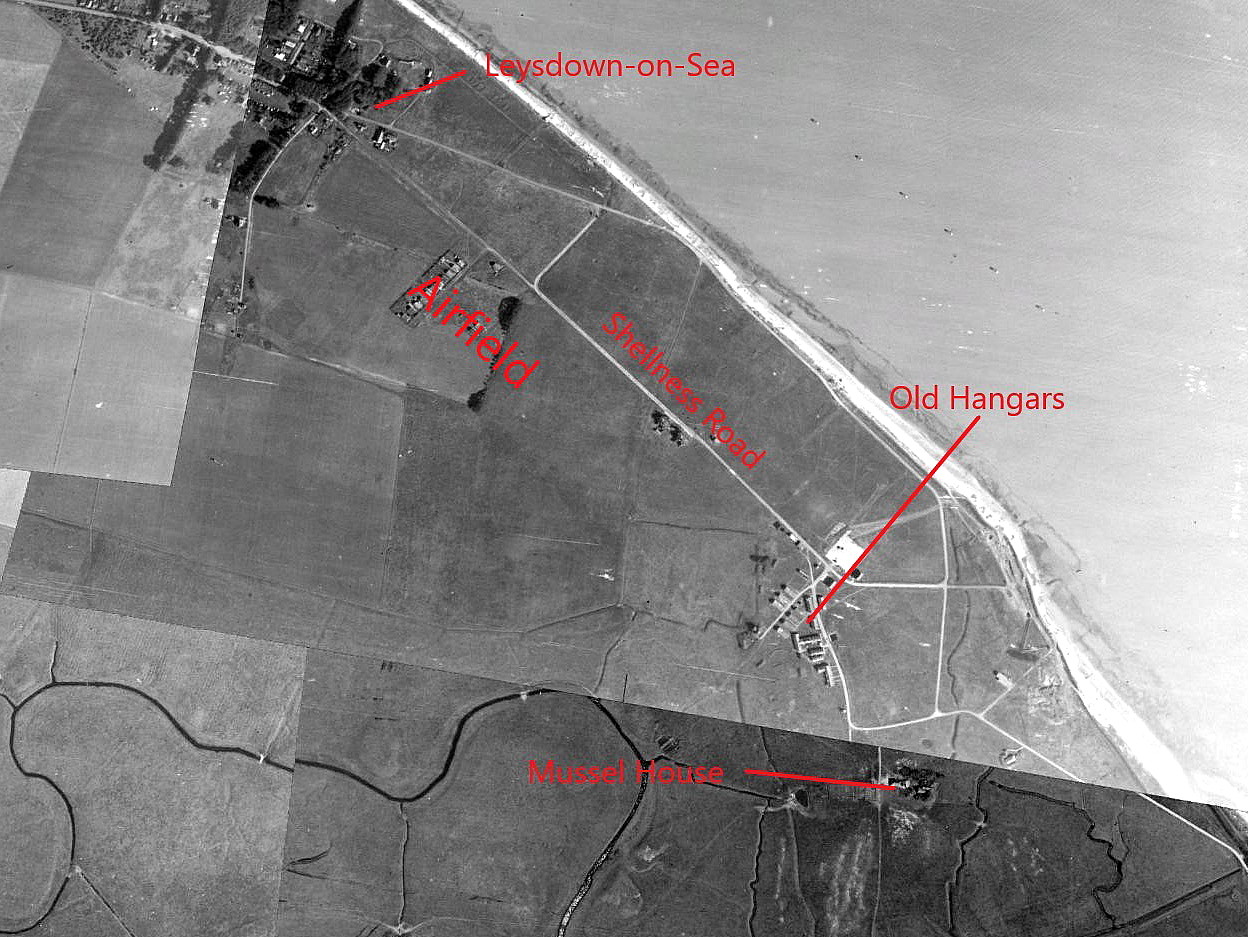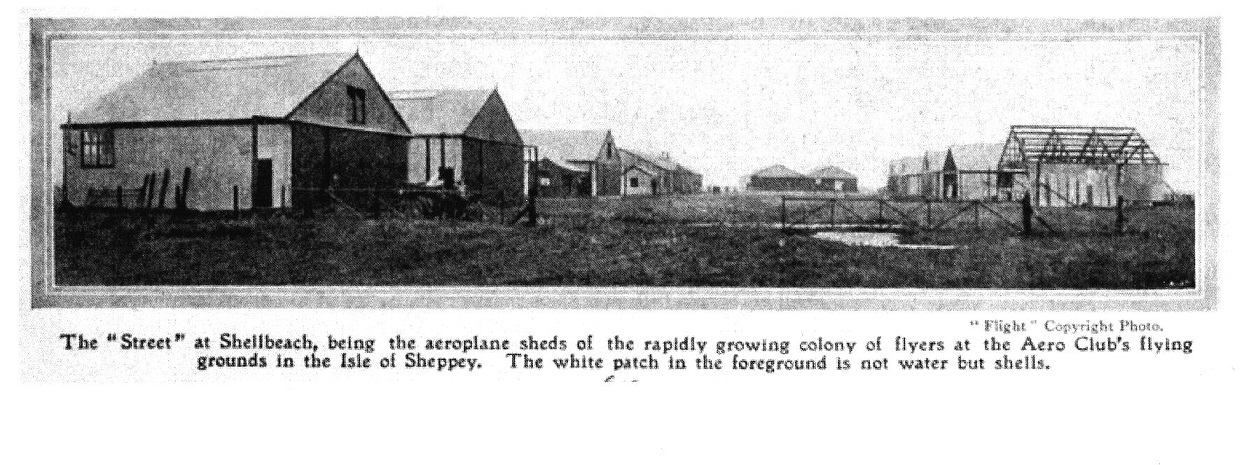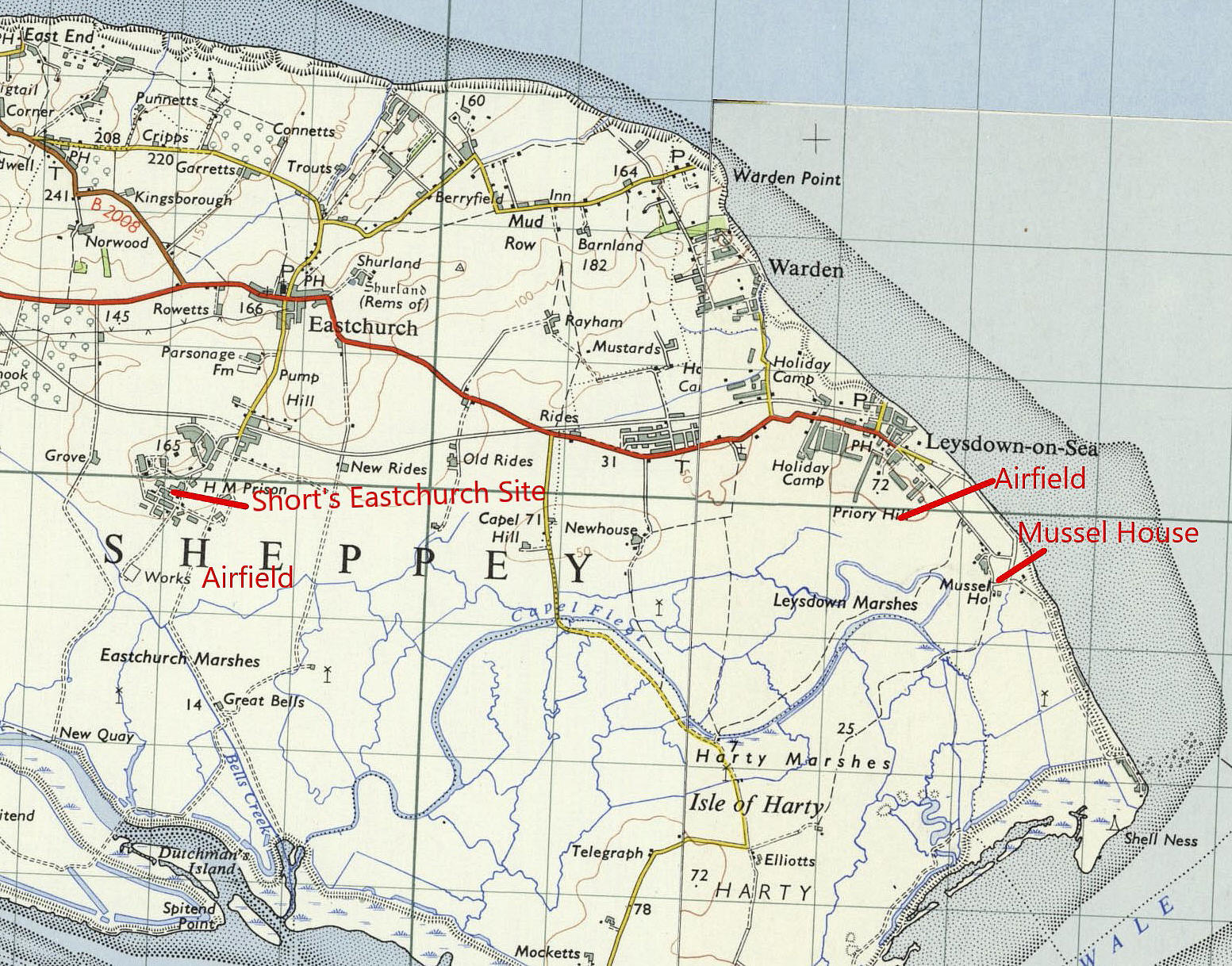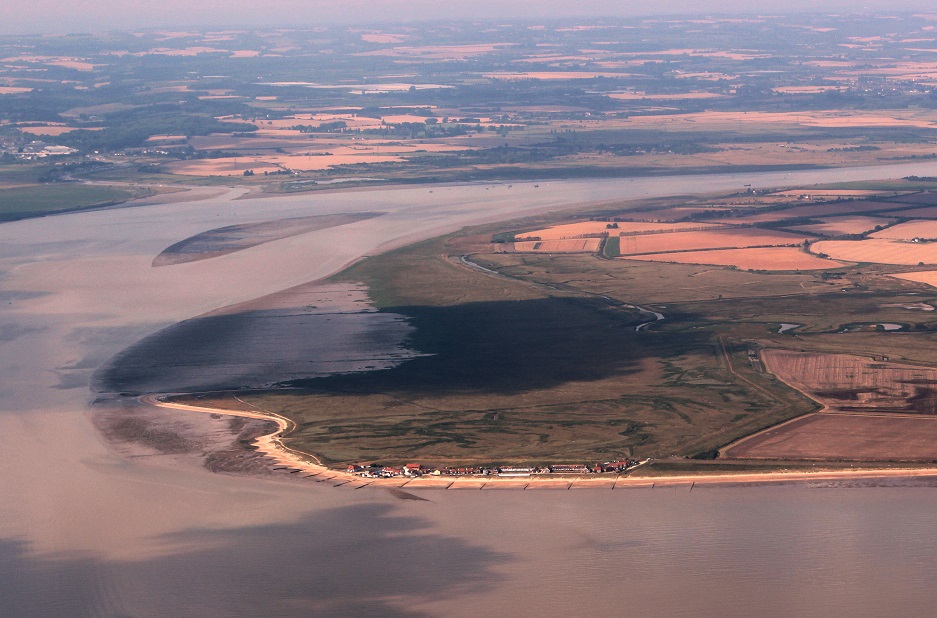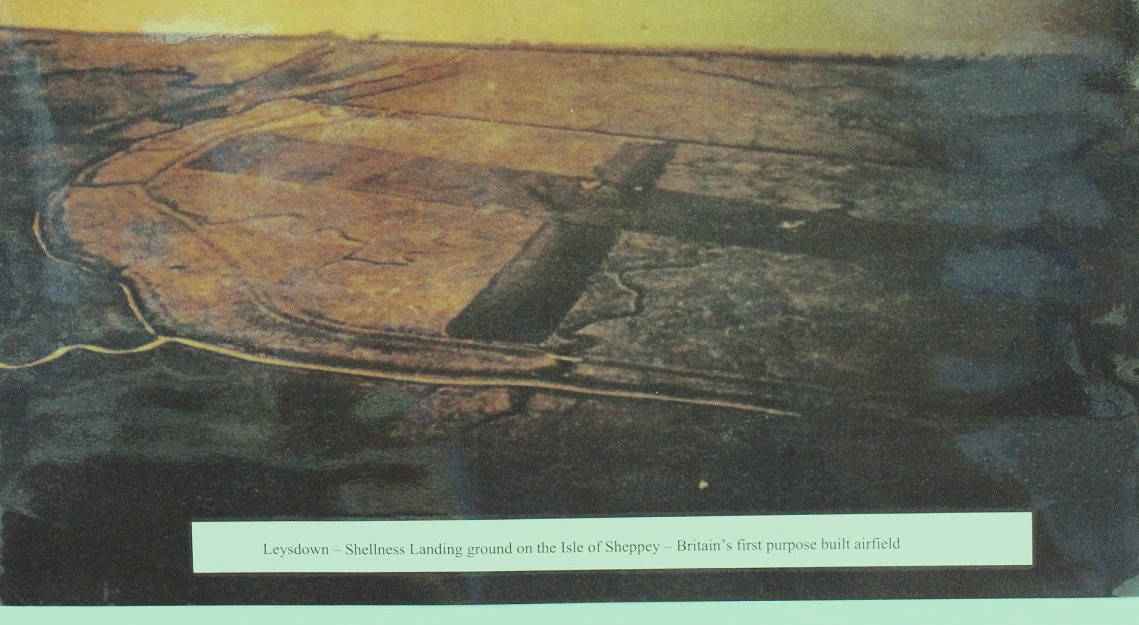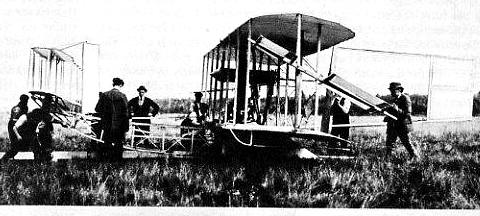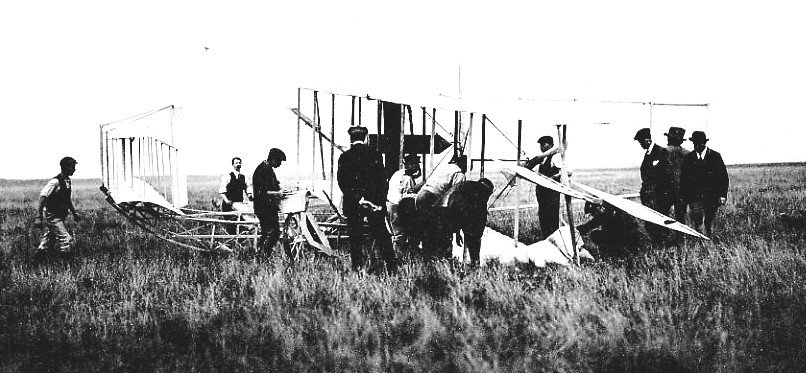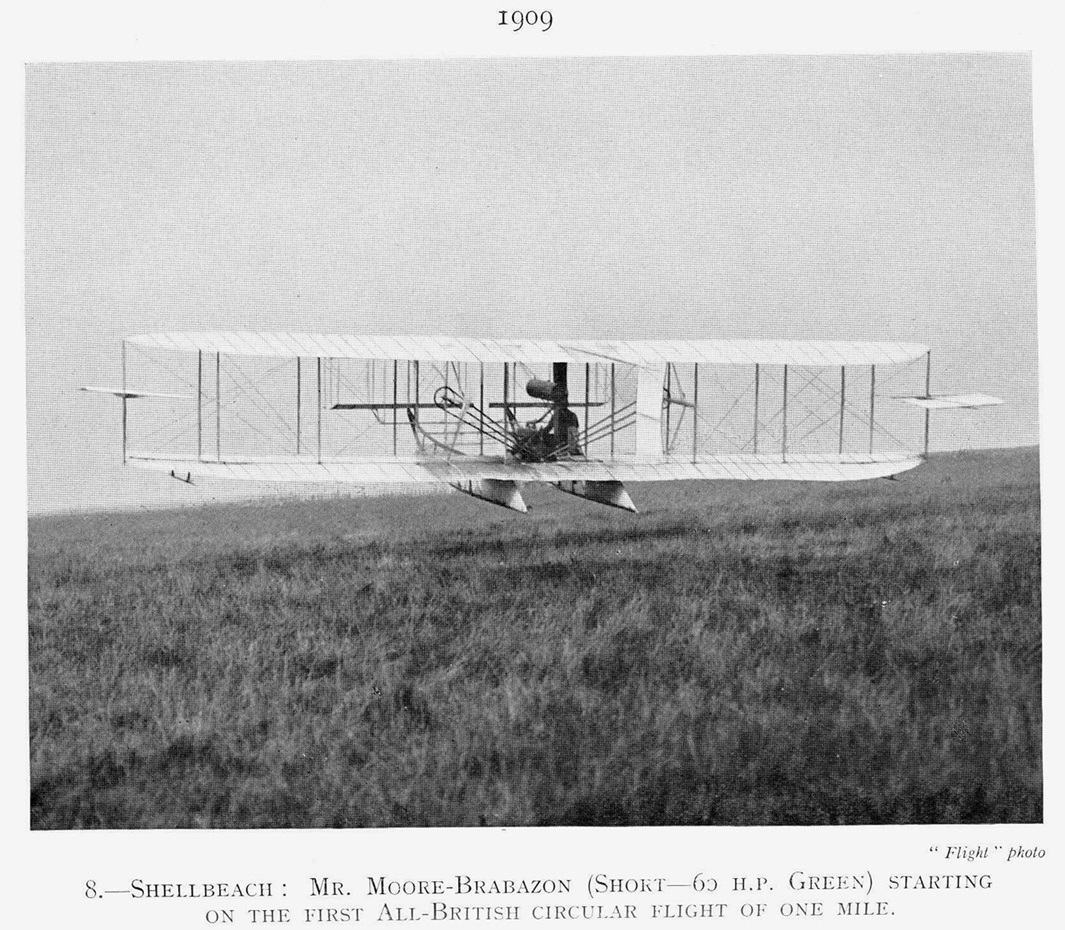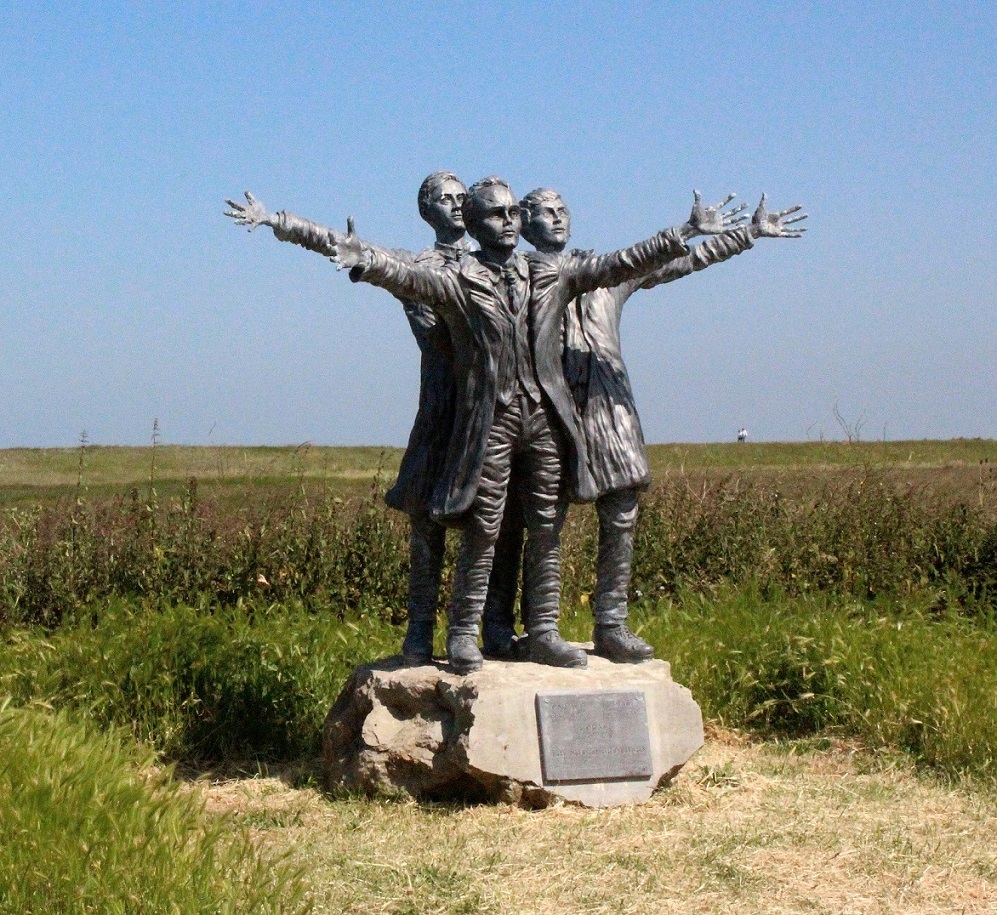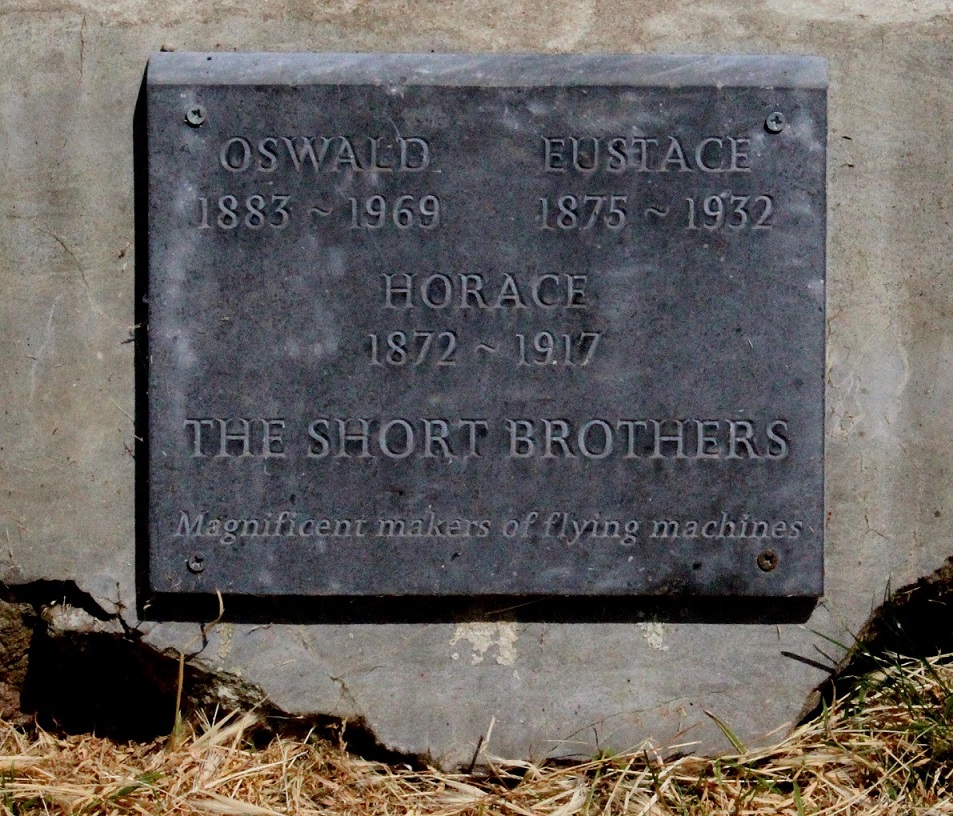Shellbeach
SHELLBEACH or SHELLNESS: First British aerodrome? (Aka MUSSEL MANOR, MUSSEL MARSHES, MUSWELL MANOR and LEYSDOWN)
NOTE: After years of very confusing research, I am now of the opinion that SHELLBEACH and LEYSDOWN were in fact just one site! The reason for keeping this listing going is quite simply that so many accounts refer to it as SHELLBEACH. And of course, in producing a 'Guide' it should reflect this. It is also important to remember that the later move to EASTCHURCH meant a new site just a few miles to the west.
Note: This gallery of maps and pictures was very kindly provided by Mr Michael T Holder
Note: Picture by the author.
Location: Isle of Sheppy. Somewhere just southeast of what is now Leysdown-on-Sea, 1 mile from Leysdown railway station
Note: This picture of this site is displayed in the Eastchurch Aviation Museum. And very interesting it is too, appearing to show a well defined aerodrome. I was told that in ideal conditions, even today, this aerodrome can still be seen marked out.
Period of operation: 1909 to 1910 (some records state 1908 but I very much doubt this?) Perhaps the fact that ‘Short Brothers’ was registered as a company in November 1908 helps explain this? This said, when the move by the Aero Club to EASTCHURCH in late 1909 occurred, I think it is fair to assume all flying activity here ceased?
NOTES: THIS is where the history of British powered aviation with fixed wing aircraft really does begin in so many ways, but much confusion seems to exist which took me ages to at least partly unravel. It is certainly the case that, even today, some ‘aviation historians’ haven’t grasped the fact that this site preceeded EASTCHURCH. Although not far apart geographically, I think that establishing the chronology of these two sites is essential in recording the very beginnings of British powered aviation.
AN EXPERT OPINION
In late April 1909 according to some experts, (it was almost certainly earlier that year?), Moore-Brabazon became the first English pilot to fly a powered aircraft in England. In mid 2009 I discovered a book by Major C C Turner called the ‘Old Flying Days’ ,(published probably in 1927), and he was the editor of ‘Aeronautics’ magazine and was personally acquainted with virtually everybody involved in the early years of British aviation history. He says the Royal Aero Club first aerodrome on Sheppey opened in February 1909 and on the 27th February 1909 Mr J T C Moore-Brabazon made the first flight in a Voisin “Pusher” called the ‘Bird of Passage’.
However, Philip Jarrett informed me in April 2016 that the arrangements to acquire this site were concluded shortly before the 27th February 1909. It seems hard to believe that flying commenced that very day. Today it now appears that Moore-Brabazon was first flying during the period, 29th April through to the 2nd May 1909.
Note: These two pictures were scanned from 'British Aviation - The Pioneer Years' by Harald Penrose. Regarding the second picture I am taking a bit of risk that it was taken at SHELLBEACH - but, if it wasn't, it certainly illustrates what did sometimes, (often?), happen.
These early aeroplanes, such as the Short No.2, flew so slowly and so low that a banked turn was out of the question - they skidded around a turn. Which itself was very close to inducing a wing to drop anyway.
Later, 30th October 1909, Moore-Brabazon won the £1000 Daily Mail prize by achieving the first officially recognised controlled flight in a powered aeroplane over a one mile circuit here, in a Short No.2 built by Short Bros at LEYSDOWN.
This photograph has been scanned from The History of British Aviation 1908 to 1914 by R Dallas Brett.
Though some say accounts state the aircraft was built at EASTCHURCH, this seems very unlikely as Shorts almost certainly hadn’t yet built their next factory at EASTCHURCH until 1910.
It wasn’t until a year later that somebody, (presumably in the Royal Aero Club?), thought up the very good idea of granting pilots certificates to indicate at least some degree of flying proficiency.
THE FIRST BRITISH PILOT CERTIFICATE
Official records say the very first, (No.1), British pilots certificate was granted when flying a Short Biplane No.2 from SHELLBEACH to J.T.C. Moore-Brabazon on the 8th March 1910. As was it seems, on the same day, certificate No.2 to the Hon. C.S. Rolls who was flying a Short-Wright Biplane. My private pilots license, now granted by the CAA is PP51245A, (I passed my GFT on the 22nd of June 1989), which really does prove just how far we’ve all come since those days.
A MEMORIAL
There is now a memorial to the Short brothers fairly near to where the earliest flying took place. Just follow the main road east out of Leysdown and it will appear on your left.
A NOTE OF CAUTION
This is not something now generally appreciated? Until April 1913 the date on the Certificate for obtaining a Pilot license only refers to the date when the certificate was awarded and not, (very importantly I would say), the actual date for whatever flying activity or duties met the criteria for a Pilots Certificate to be awarded. I imagine the Royal Aero Club demanded some kind of reasonable proof? Was an accredited witness required? It does appear that Moore-Brabazon was the first ‘Briton’ or ‘Englishman’ to make powered flights, eventually making a distance of 1,500ft during the weekend of April 30th to May 2nd 1909.
Certificate No.3 License was granted to A. Rawlinson on the 5th April 1910 who was flying a Farman Biplane but after that SHELLBEACH disappears from official records because of the move to EASTCHURCH. The fact of the matter seems to be that the Aero Club had gained the flying rights to the airspace above a couple of hundred acres of marshland adjacent to and south of LEYSDOWN normally known in those days as SHELLBEACH. Was this, given that flying rights were awarded over these marshes, (although nobody knew of the concept), the first application of controlled airspace in the world?
THE FIRST AERODROME IN THE UK?
LEYSDOWN/SHELLBEACH seems to be the first aerodrome in KENT and one on the very first, if not the first practical aerodrome, in the UK. It makes sombre reading to discover that according to official records two of the first four pilots, (No.2 the Hon. C.S.Rolls (see ENSBURY PARK in Bournemouth), and No.4 Cecil Grace, (see DOVER), to be awarded pilots certificates in 1910 died whilst flying that same year. Their flying career for both measured in months at best and with barely a few hours actual flying experience.
THE MOVE TO EASTCHURCH
It has been said that the Aero Club moved to EASTCHURCH because the very small dykes around SHELLBEACH presented a wingtip collision risk when banking to turn! We must remember that many if not most flights in those days were usually performed very close to the ground. Indeed, many of those early aeroplanes could barely get airborne. But, by the time the move to EASTCHURCH happened, aircraft could attain much higher altitudes.
As the account by C G Grey states, “There is a clear 7 miles run to Queensborough, practically without a tree or a house in the way, and with good landing ground everywhere.” As said, within a year enormous strides had been taken to advance aircraft performance. Another account reckons, “….the dykes at Shellbeach rendered the ground unsuitable for wheeled machines.” Make of this what you will? Obviously it appears that fixed wing powered aircraft were now appearing with wheeled undercarriages.
We'd love to hear from you, so please scroll down to leave a comment!
Leave a comment ...
Copyright (c) UK Airfield Guide















